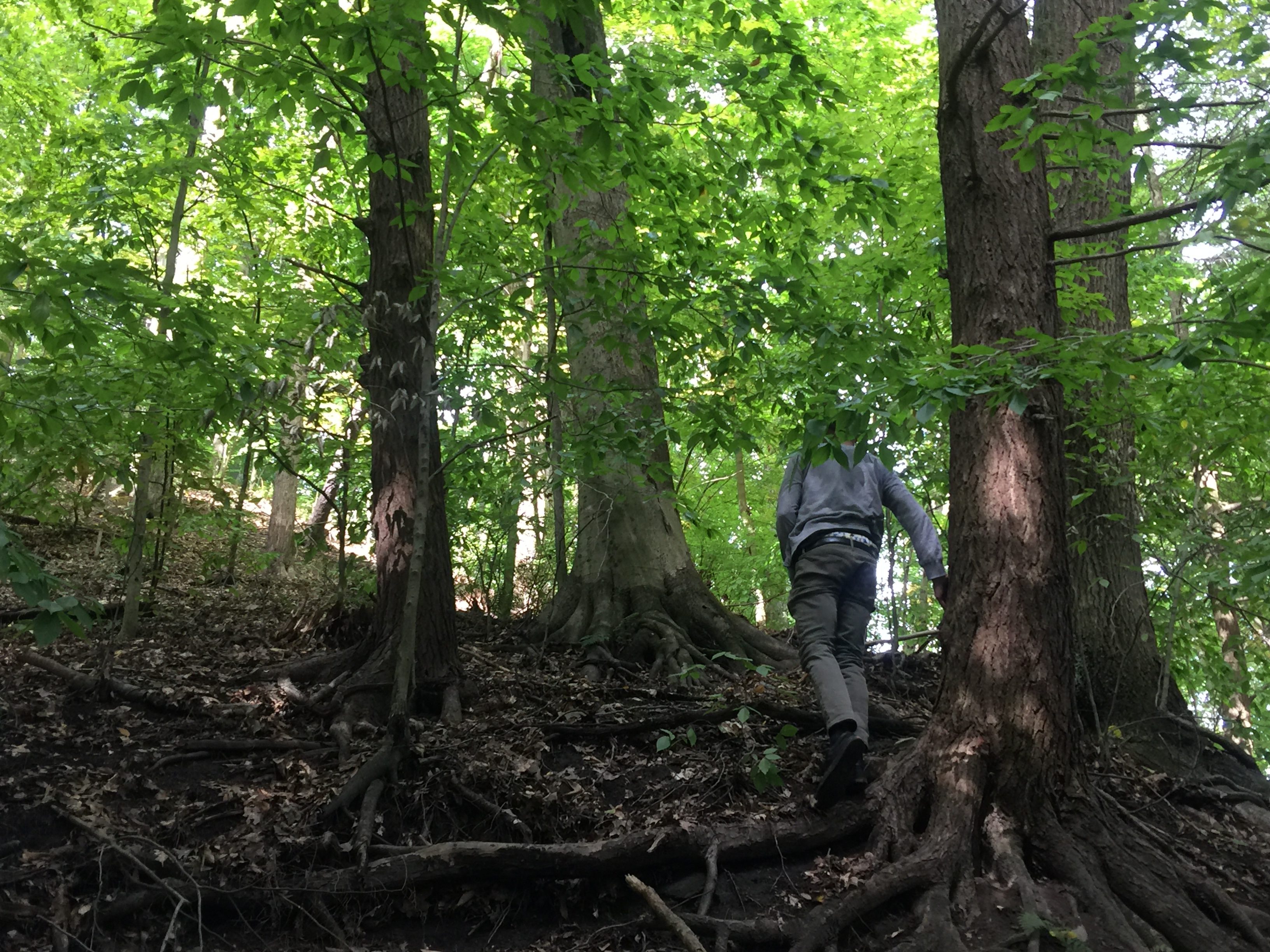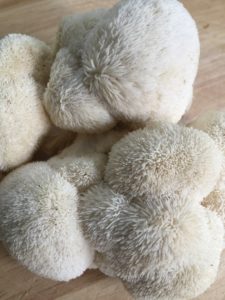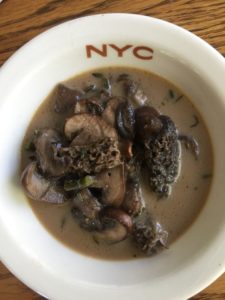 I had the good fortune to tag along with Craig Waasdorp, co-owner of Little Sprout Farms, on a recent wild mushroom foraging hike. Since I’m accustomed to wild mushrooms being harvested during the winter months in northern CA, I was intrigued to learn about the different season here in western New York.
I had the good fortune to tag along with Craig Waasdorp, co-owner of Little Sprout Farms, on a recent wild mushroom foraging hike. Since I’m accustomed to wild mushrooms being harvested during the winter months in northern CA, I was intrigued to learn about the different season here in western New York.
 Craig and his wife, Sara, have been working on their farm for the past three years and mushrooms are becoming their main product line. It turns out, opposite of CA, the growing season here starts when the snow melts in spring and en
Craig and his wife, Sara, have been working on their farm for the past three years and mushrooms are becoming their main product line. It turns out, opposite of CA, the growing season here starts when the snow melts in spring and en ds with the first frost. Since this is the fall time of year and the ground is wet, the Maitake and Lion’s Mane mushrooms are sprouting. Craig is holding a five pound Maitake bloom, an in-demand item at high-end restaurants. Maitakes, also called Hen of the Woods, grow at the base of oat trees and love humid dark environments. Lion’s Mane, so named for their hairy rounded mounds, are used in recipes but their main purpose is in pharmaceuticals since they are believed to regenerate brain cells and relieve anxiety. Think of them as a natural Xanex! Chicken of the Woods, which look like a rooster’s head, has a slight taste of chicken and can be substituted when you want to stay vegetarian in recipes.
ds with the first frost. Since this is the fall time of year and the ground is wet, the Maitake and Lion’s Mane mushrooms are sprouting. Craig is holding a five pound Maitake bloom, an in-demand item at high-end restaurants. Maitakes, also called Hen of the Woods, grow at the base of oat trees and love humid dark environments. Lion’s Mane, so named for their hairy rounded mounds, are used in recipes but their main purpose is in pharmaceuticals since they are believed to regenerate brain cells and relieve anxiety. Think of them as a natural Xanex! Chicken of the Woods, which look like a rooster’s head, has a slight taste of chicken and can be substituted when you want to stay vegetarian in recipes.
 Chanterelles, golden in color and delicate, is probably the most well-known wild mushroom. They cannot be cultivated in a greenhouse, only wild, and grow in grassy patches, moss and ferns throughout the summer.
Chanterelles, golden in color and delicate, is probably the most well-known wild mushroom. They cannot be cultivated in a greenhouse, only wild, and grow in grassy patches, moss and ferns throughout the summer.
Another specialty wild mushroom is Morels which pop their heads out of fruit and ash trees in early spring with a short 4-6 week growth cycle and why they are so exclusive. I was lucky to score some from Craig earlier in the year and made a M ixed Mushroom Chowder that let the mushrooms take the lead. Saute 1 lb of mixed mushrooms in 1 tbsp olive oil and 1 tbsp of butter, when softened, add 3 cups of Chicken stock, 1/2 c. of half and half, scallions, thyme and season to taste. Cook it low and slow so those Morel morsels penetrate the chowder. Mushrooms bring a natural umami taste to any dish you prepare.
ixed Mushroom Chowder that let the mushrooms take the lead. Saute 1 lb of mixed mushrooms in 1 tbsp olive oil and 1 tbsp of butter, when softened, add 3 cups of Chicken stock, 1/2 c. of half and half, scallions, thyme and season to taste. Cook it low and slow so those Morel morsels penetrate the chowder. Mushrooms bring a natural umami taste to any dish you prepare.
What I learned is that wild mushrooms play a huge part in forest restoration providing the necessary nutrients for trees to survive. Mushrooms complete the cycle of life in woods by taking dead material and rejuvenating sick soil. “Mushrooms are the internet super highway of the forest”, said Craig. He sent this beautifully produced video which explains the evolution and their purpose in nature.
There are 1000’s of varieties of wild mushrooms and some are poisonous and why you should hike with a knowledgeable forager. They can look similar, one being edible, and another with poisonous look-alikes. Jack-o-Latern mushrooms are bright orange and are confused for Chanterelles. They are poisonous. Case in point half a dozen people got sick at a New Hampshire festival this year thinking they were Chanterelles. Every year in CA, there are deaths from mushrooms picked from Golden Gate Park looking like they’re edible, only to be poisonous. Be aware and trust your forager.
Which leads us to cultivated mushrooms. With the wild mushroom season winding down, Craig will be splitting his time with a cultivator in upstate who specializes in Blue and Pink Oyster, Shiitake, Lion’s Mane and a new variety, Chestnut, mushrooms. Here in Rochester, they have 12 commercial accounts with high-end restaurants, all on a wait list for mushrooms, so the winter season will be busy.
For more information about mushrooms, you can contact Little Sprout Farms here
Opinions of the author are her own and products were purchased or otherwise noted for discussion. I welcome your comments and suggestions for food and specialty items from upstate New York and can be reached at: linda@anexpatreturns.com
Follow me on Instagram and Facebook to stay current with the latest posts and more!

